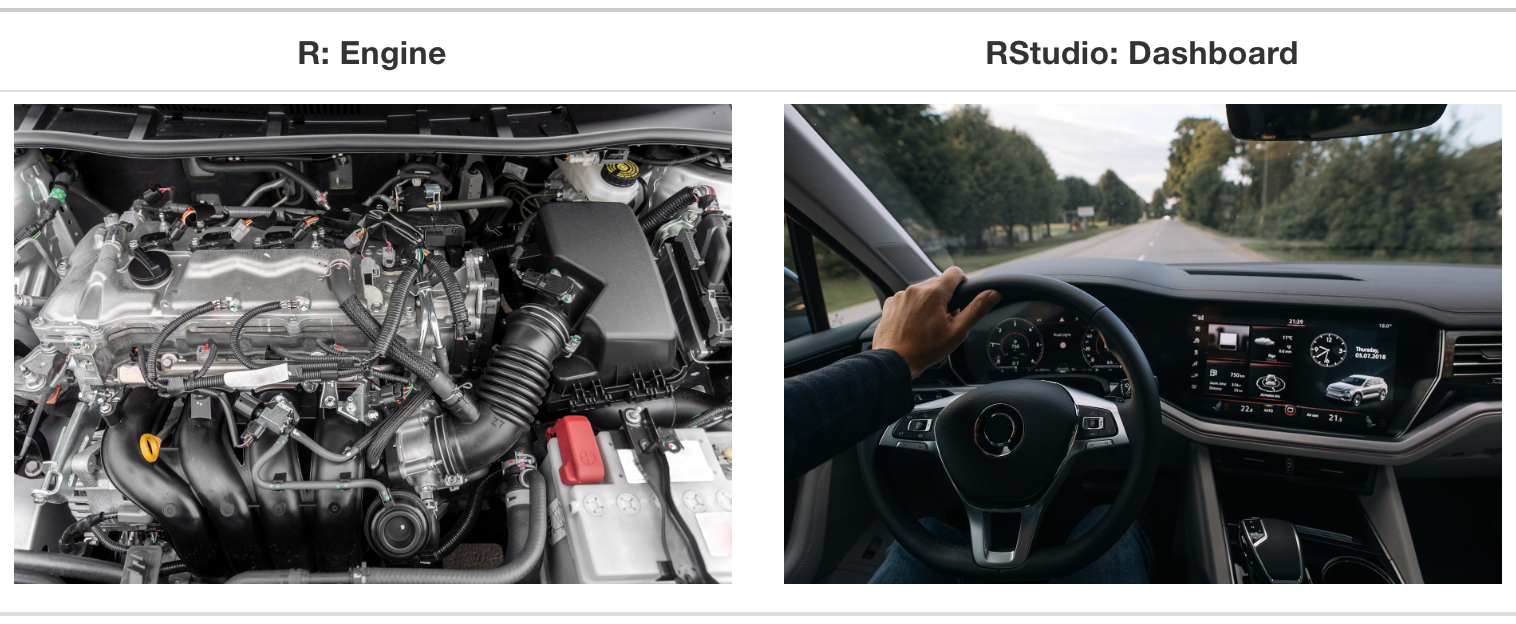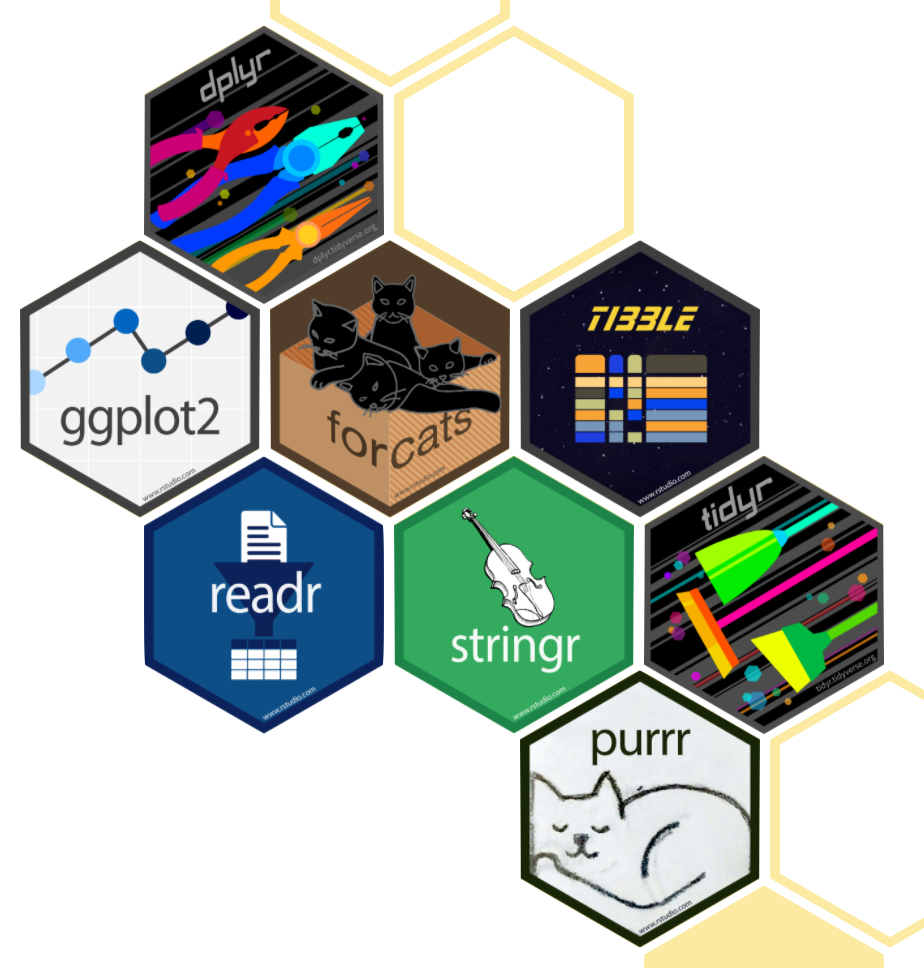Meet the toolkit
Lecture 2
Duke University
STA 113 - Fall 2023
Warm up
Reflection
What is one thing you learned from your reading that was “new” to you? And what is one question you have from the reading?
Announcements
My office hours: Thursdays 10-11am on Zoom (link to be posted!)
Course webpage updated with tentative schedule for due dates
From last time…
Application exercise: UN Votes
Go to Posit Cloud and start the project called ae-01-un-votes. Render the document titled unvotes.qmd. Review the narrative and the data visualization you just created. Then, change “Turkey” to another country of your choice. Re-render the document. Show the plot you created to your neighbor and discuss (1) why you chose that country and (2) how this new visualization is different than the original (and what that says about country politics, if anything).
Meet the toolkit: Computing with R and RStudio
Learning goals
By the end of the course, you will be able to…
- gain insight from data
- gain insight from data, reproducibly
- gain insight from data, reproducibly, using modern programming tools and techniques
- gain insight from data, reproducibly and collaboratively, using modern programming tools and techniques
- gain insight from data, reproducibly (with literate programming and version control) and collaboratively, using modern programming tools and techniques
Reproducible data analysis
Reproducibility checklist
What does it mean for a data analysis to be “reproducible”?
Near-term goals:
- Are the tables and figures reproducible from the code and data?
- Does the code actually do what you think it does?
- In addition to what was done, is it clear why it was done?
Long-term goals:
- Can the code be used for other data?
- Can you extend the code to do other things?
Toolkit for reproducibility
- Scriptability \(\rightarrow\) R
- Literate programming (code, narrative, output in one place) \(\rightarrow\) Quarto
- Version control \(\rightarrow\) Git / GitHub
R and RStudio
R and RStudio

- R is an open-source statistical programming language
- R is also an environment for statistical computing and graphics
- It’s easily extensible with packages
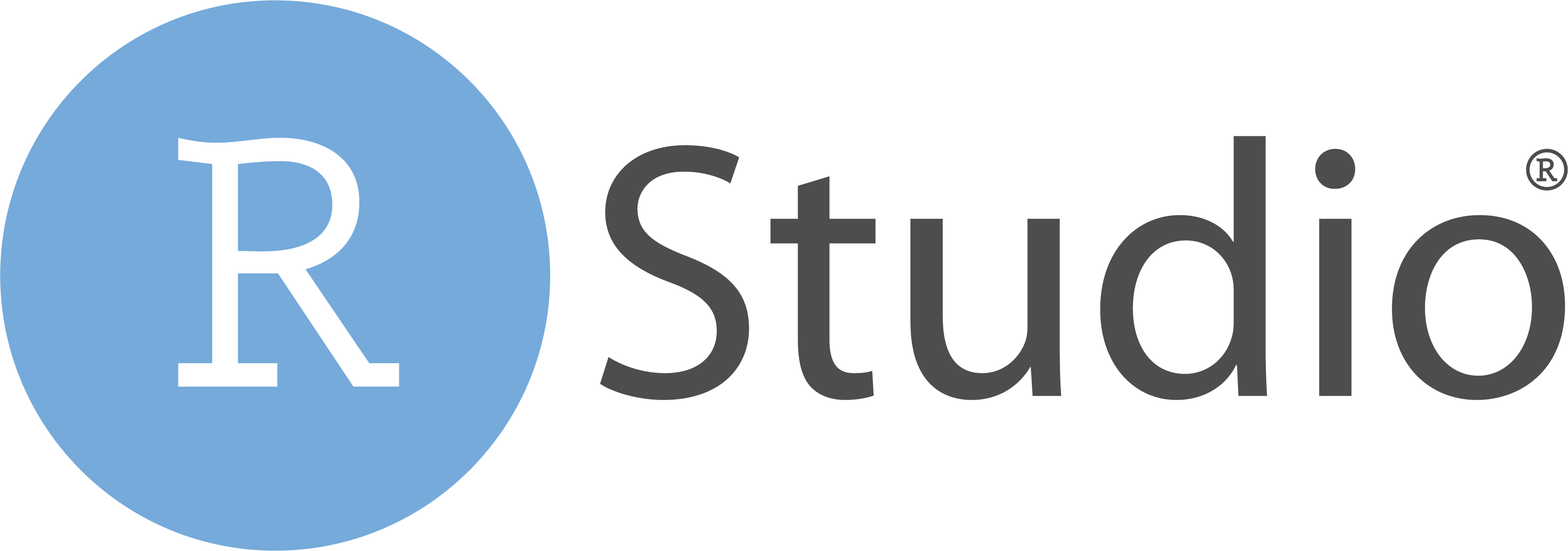
- RStudio is a convenient interface for R called an IDE (integrated development environment), e.g. “I write R code in the RStudio IDE”
- RStudio is not a requirement for programming with R, but it’s very commonly used by R programmers and data scientists
R vs. RStudio
R packages
Packages: Fundamental units of reproducible R code, including reusable R functions, the documentation that describes how to use them, and sample data1
As of September 2022, there are over 18,000 R packages available on CRAN (the Comprehensive R Archive Network)2
We’re going to work with a small (but important) subset of these!
Tour: R and RStudio
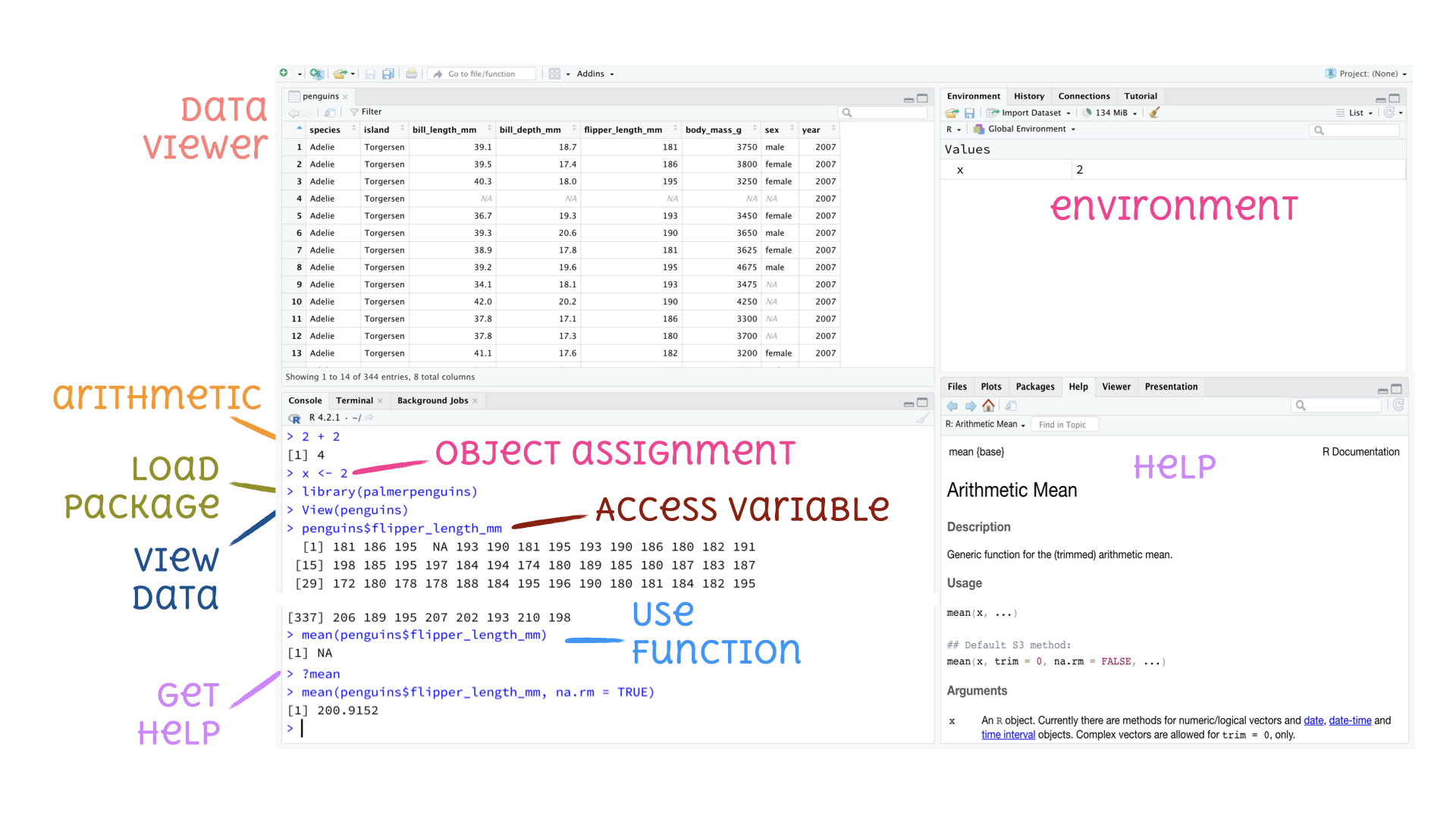
A short list (for now) of R essentials
- Functions are (most often) verbs, followed by what they will be applied to in parentheses:
R essentials (continued)
- Columns (variables) in data frames are accessed with
$:
tidyverse
- The tidyverse is an opinionated collection of R packages designed for data science
- All packages share an underlying philosophy and a common grammar
Quarto
Quarto
- Fully reproducible reports – each time you render the analysis is ran from the beginning
- Code goes in chunks narrative goes outside of chunks
- A visual editor for a familiar / Google docs-like editing experience
Tour: Quarto
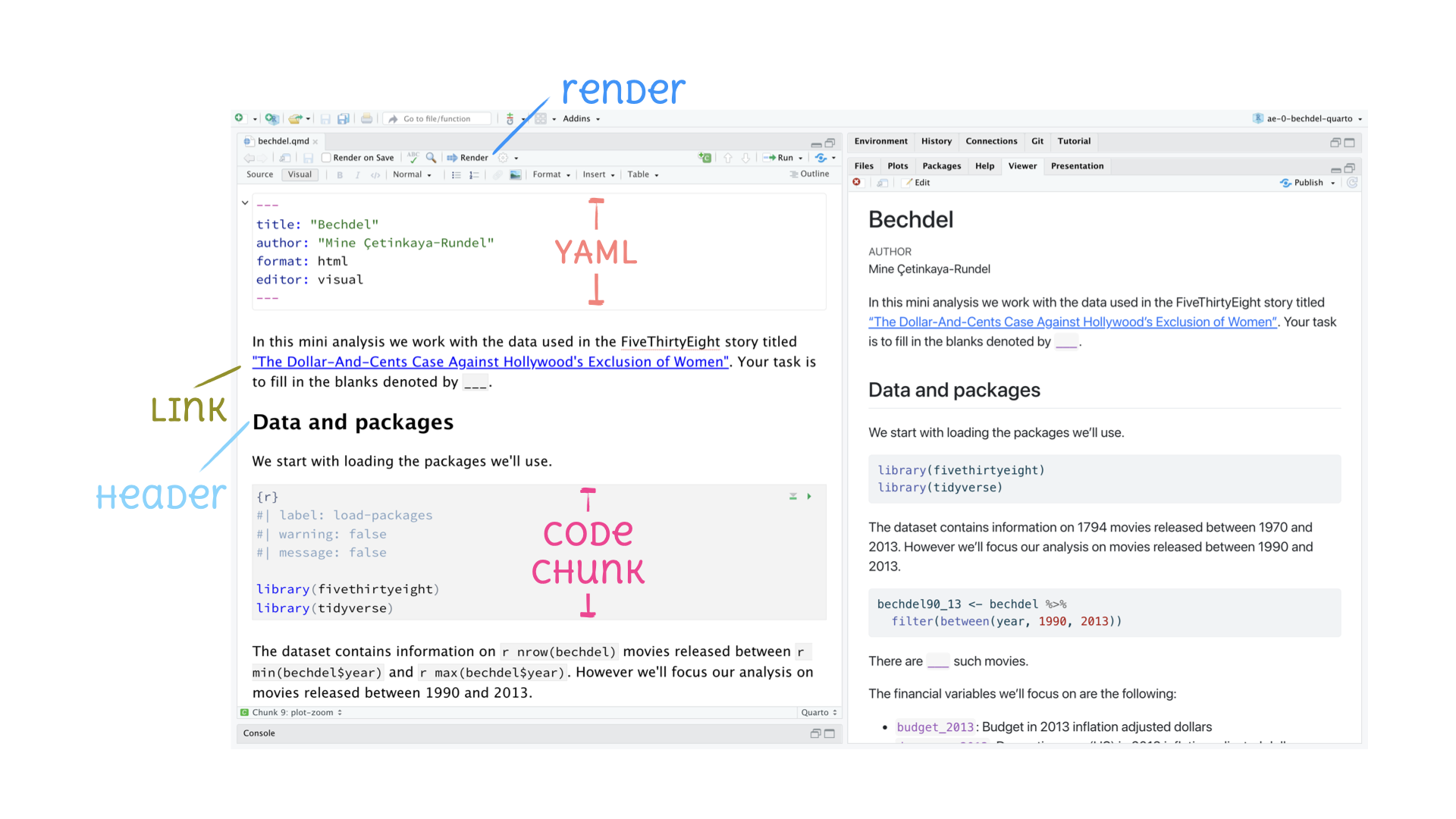
How will we use Quarto?
- Every assignment / report / project / etc. is an Quarto document
- You’ll always have a template Quarto document to start with
- The amount of scaffolding in the template will decrease over the semester
Application exercise: Flint
Go to Posit Cloud and start the project called ae-02-flint. Open the document titled flint.qmd.
Wrap up
Next time
We’ll continue out “Meet the toolkit” journey, focusing on version control tools, Git and GitHub, the last piece of the puzzle
We’ll then move on to the nuts and bolts of data visualization in R with ggplot2

